TRAILER HITCHES – Useful Info
Use our interactive system to find the best trailer hitch for you
HOW DOES THE TRAILER HITCH SYSTEM WORK?
At Autotech Performance, we’re happy to share the trailer hitch basics with you. This way, you’ll be able to make an informed choice that will comply with your vehicle’s specifications, meet your expectations and fit your budget.
These are the main components of a trailer hitch system and how they work.
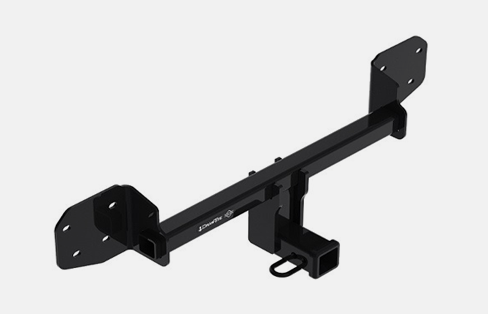
Receiver-type hitch
This is the receiver hitch that goes on the underside of your vehicle. It is mounted on the rear end of the vehicle’s frame and has an opening that accepts a removable drawbar, ball mount, bike rack or accessories.
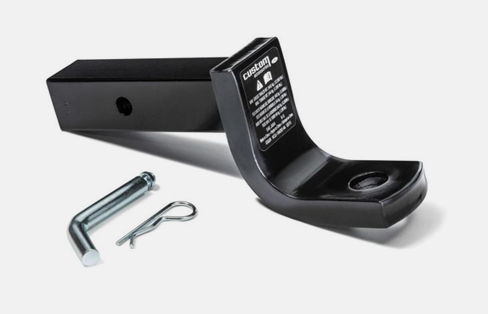
Drawbar hitch
This is the removable drawbar that links the receiver-type hitch to the trailer, camper, bike rack, etc.
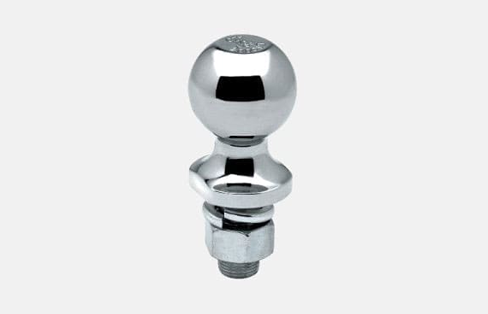
Hitch ball
This is the ball that is inserted into the drawbar. Hitch balls come in various sizes that depend on the load they will tow and the country where they are used.
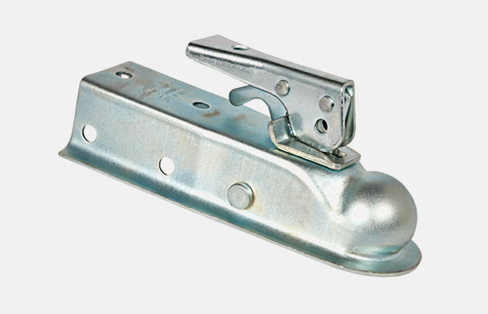
Trailer coupler
The trailer coupler is the part that slips over the hitch ball and latches on to the ball mount.
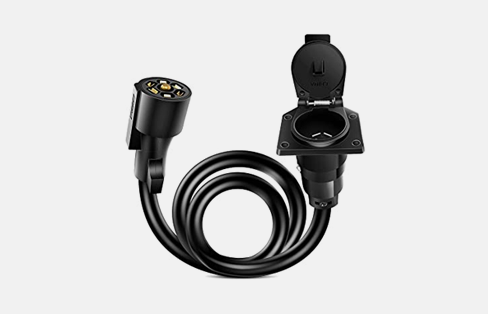
Wiring
In order to legally tow a trailer, proper wiring must be installed between your vehicle and your trailer to provide it with functional rear lights, turn signals and braking lights.
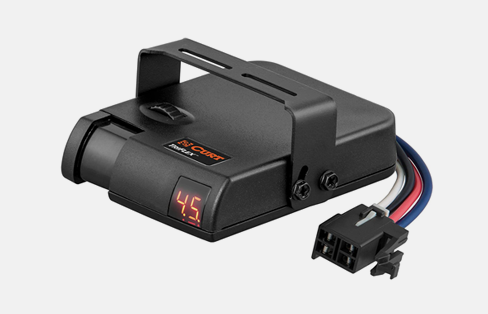
Braking control
For large trailers and campers, a towing system can also include brake control that is coupled with the vehicle’s braking system. This will make it easier to manoeuvre the trailer and ensure that it can slow down and stop safely.
Lastly, there are several accessories that make towing safer and easier (such as mirrors, tarps, etc.) and can be useful additions to your towing system.
WHAT ARE THE TRAILER HITCH CLASSES SPECIFIC TO NORTH AMERICA?
In North America, trailer hitches are divided into five classes that have a specific weight ratings. You need to make sure that you choose a hitch with a nominal weight that is greater than your trailer’s loaded weight. You should also keep in mind your vehicle’s towing capacity in terms of weight and types of hitches. This often determines the trailer hitch class that you can choose. You can also consider your future towing needs. It might be more useful and cost-effective to select, from the start, a hitch from a higher class that will enable you to tow heavier loads!
When you’re planning the purchase of a trailer hitch, make sure you have the following information in hand:
- Your vehicle’s year, make, model and maximum towing capacity. This information is usually available in the owner’s manual.
- The type, size, total trailer weight and the weight of the trailer coupler.
THERE ARE TWO TYPES OF TRAILER HITCHES
“Basic” trailer hitches, also known as “WC” for weight carrying, are used for light loads. These trailer hitches use a simple ball-coupler mechanism to attach the trailer to the vehicle. They are categorized in classes 1 and 2.
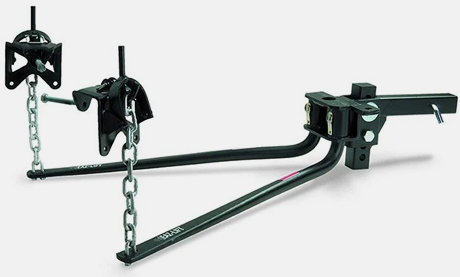
Weight-distributing or “WD” trailer hitches are used for heavier loads. These are categorized in classes 3, 4 and 5. This type of trailer hitch includes a part that slides into the receiver and redistributes the weight on the coupling head. The system usually includes two spring bars, one on either side of the trailer, that apply a lever-like force on the vehicle and lift it to shift the weight of the rear axle toward the front axle, thereby improving the vehicle’s stability.
Also know that there are some parts you can install on your vehicle that will allow you to tow heavier loads more efficiently and safely. These include stiffer springs, air springs, air-controlled shock absorbers and longer stabilizer bars.
THE 5 TRAILER HITCH CLASSES
Below is an overview of each class to help you make an informed choice. However, you need to keep in mind all the selected product’s features that are provided when you purchase a trailer hitch.
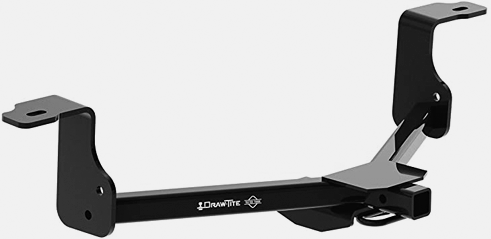
Class 1 – For towing light loads such as small trailers, motorcycles and snowmobiles
- Hitch type: basic (WC)
- Maximum (vertical) load on the trailer coupler (TW): up to 200 lb
- Gross trailer weight (GTW): up to 2,000 lb
- Attachment point: vehicle frame, bumper
- Hitch ball capacity: equal to or greater than class 1
- Square opening of the receiver-type hitch: 1.25″ (32 mm)
- Vehicles: all types of small cars
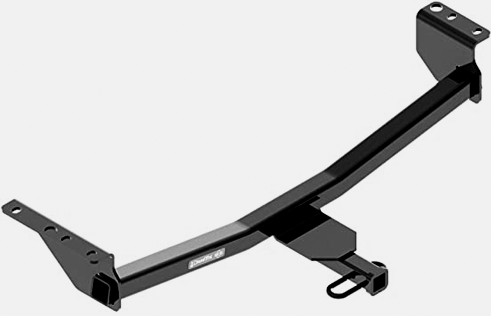
Class 2 – For towing relatively light loads such as small boats, and tent trailers
- Hitch type: basic (WC)
- Maximum (vertical) load on the trailer coupler (TW): up to 350 lb
- Gross trailer weight (GTW): up to 3,500 lb
- Attachment point: vehicle frame, bumper
- Hitch ball capacity: equal to or greater than class 2
- Square opening of the receiver-type hitch: 1.25″ (32mm)
- Vehicles: mid-size cars, pickup trucks, SUVs
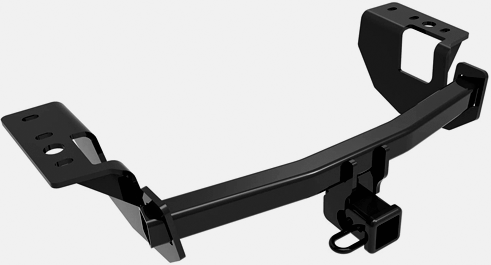
Class 3 – For towing heavy loads such as campers and inboard boats
- Hitch type: basic (WC) and/or weight distributing (WD)
- Maximum (vertical) load on the trailer coupler (TW): up to 350 or 500 lb for WC; up to 500 or 1,000 lb for WD (according to vehicle make)
- Gross trailer weight (GTW): up to 3,500 lb or 5,000 lb for WC; up to 5,000 or 10,000 lb for WD (according to vehicle make)
- Attachment point: vehicle frame
- Hitch ball or fixed drawbar capacity: equal to or greater than class 3
- Square opening of the receiver-type hitch: 2″ (51 mm)
- Vehicles: mid-size cars, pickup trucks, vans, SUVs
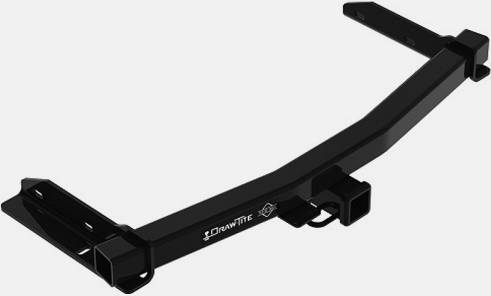
Class 4 – For towing heavier loads such as campers and larger boats
- Hitch type: basic (WC) and/or weight distributing (WD)
- Maximum (vertical) load on the trailer coupler (TW): up to 1,200 lb for WC; up to 1,500 lb for WD
- Gross trailer weight (GTW): up to 12,000 lb for WC; up to 15,000 lb for WD
- Attachment point: vehicle frame
- Hitch ball or fixed drawbar capacity: equal to or greater than class 4
- Square opening of the receiver-type hitch: 2” (51 mm) or 2.5” (64 mm)
- Vehicles: full-sized cars, pickup trucks, vans, SUVs
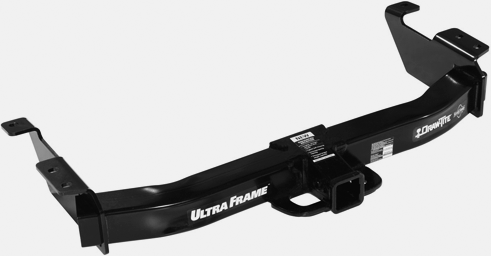
Class 5 – For towing even heavier loads such as large trailers and larger boats
- Hitch type: basic (WC) and/or weight distributing (WD)
- Maximum (vertical) load on the trailer coupler (TW): up to 1,300 lb for WC; up to 1,700 lb for WD
- Gross trailer weight (GTW): up to 13,000 lb for WC; up to 17,000 lb for WD
- Attachment point: vehicle frame
- Hitch ball or fixed drawbar capacity: equal to or greater than class 5
- Square opening of the receiver-type hitch: 2” (51 mm) or 2.5” (64 mm)
- Vehicles: pickup trucks only



